Yeast infection on skin folds. Intertrigo: Causes, Symptoms, and Treatment of Skin Fold Infections
What is intertrigo. How does it develop in skin folds. What are the common causes and risk factors for intertrigo. How is intertrigo diagnosed and treated. What are effective home remedies and prevention methods for intertrigo.
What is Intertrigo and How Does it Affect the Skin?
Intertrigo is an inflammatory skin condition that occurs in warm, moist areas where skin rubs against skin, such as skin folds. It affects the top layers of skin and is characterized by redness, irritation, and sometimes breakdown of the skin.
Common areas affected by intertrigo include:
- Groin folds
- Under the breasts
- Armpits
- Abdominal folds
- Between fingers and toes
- Neck creases
- Elbow and knee folds
The constant friction and trapped moisture in these areas create an environment conducive to skin irritation and secondary infections. While intertrigo itself is not an infection, it often leads to overgrowth of bacteria, fungi, or yeast in the affected skin folds.
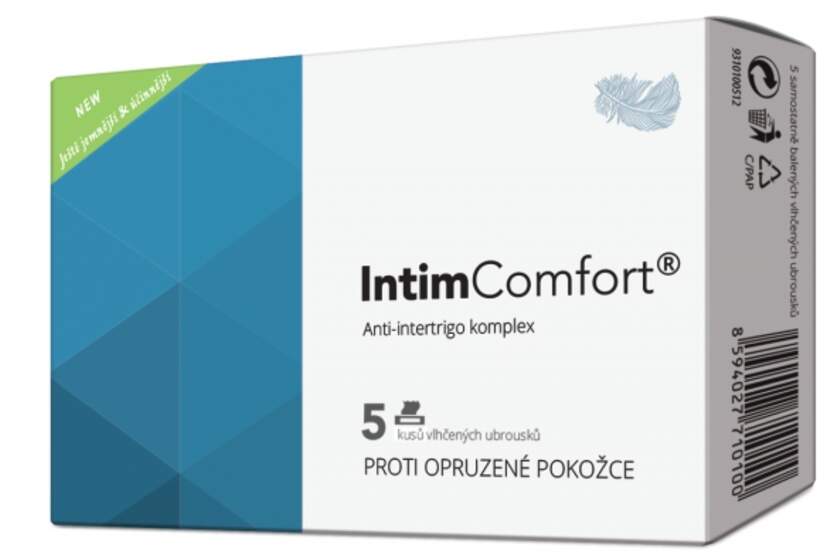
What Causes Intertrigo to Develop?
The primary cause of intertrigo is skin-on-skin friction combined with trapped moisture in skin folds. Several factors can increase the risk of developing this condition:
- Obesity – excess skin folds create more areas for friction
- Hot, humid weather – increases sweating and moisture
- Poor hygiene – allows buildup of sweat and bacteria
- Tight clothing – traps moisture against skin
- Diabetes – increases risk of skin infections
- Incontinence – prolonged skin exposure to urine/feces
- Hyperhidrosis (excessive sweating)
- Certain medications that cause sweating
In infants, intertrigo is common due to their chubby skin folds, drooling, and difficulty keeping skin folds dry. Athletes and those who wear tight-fitting shoes are prone to developing intertrigo between toes.
What Are the Symptoms and Clinical Presentation of Intertrigo?
The key symptoms and signs of intertrigo include:
- Redness and inflammation in skin fold areas
- Itching, burning, or stinging sensation
- Oozing or weepy skin
- Cracked or macerated skin
- Unpleasant odor
- Pain or tenderness
- Scaling or peeling skin
In severe cases or with secondary infections, additional symptoms may include:
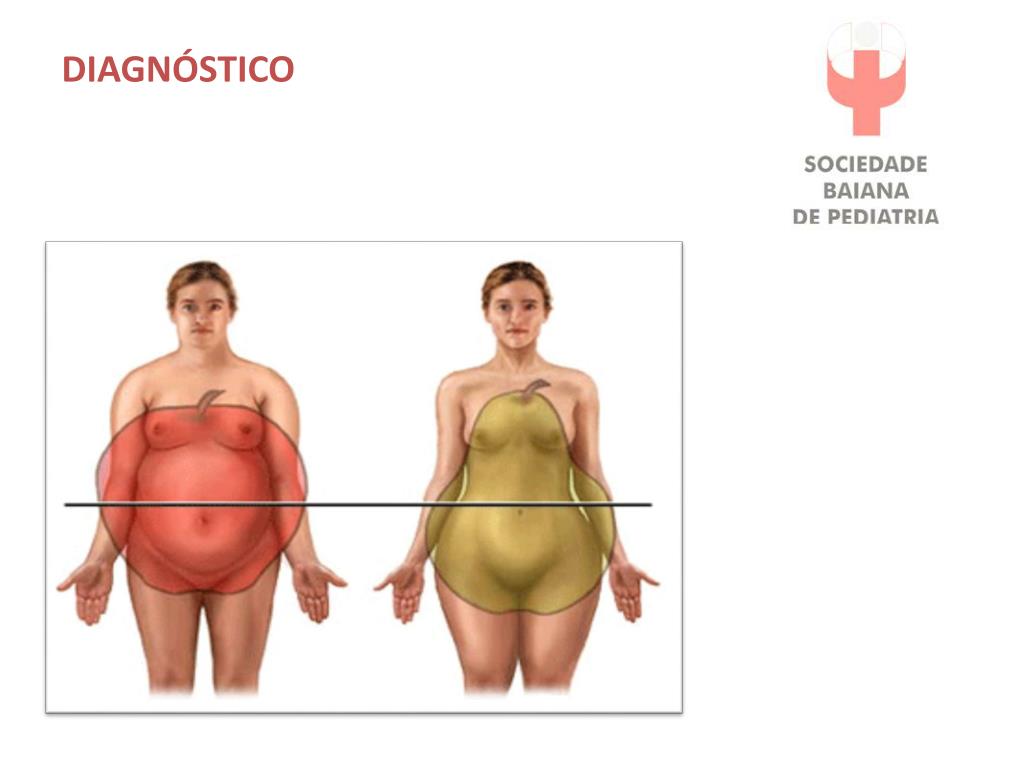
- Pustules or small pus-filled blisters
- Crusting or scabbing
- Erosions or shallow ulcerations
- Satellite lesions spreading beyond skin folds
The appearance can vary depending on the specific pathogen involved in any secondary infection. For example, candidal infections often present with bright red plaques and satellite pustules, while bacterial infections may have more yellow crusting.
How is Intertrigo Diagnosed?
Diagnosis of intertrigo is typically based on clinical presentation and physical examination. The characteristic redness and irritation in skin fold areas are usually sufficient for a diagnosis. However, additional tests may be performed to identify any secondary infections:
- Skin scraping and KOH examination – to check for fungal infection
- Wood’s lamp examination – to detect certain bacterial infections
- Skin swab culture – to identify specific bacterial or fungal pathogens
- Skin biopsy – rarely needed, but may be done to confirm diagnosis in atypical cases
Differential diagnosis is important to rule out other conditions that can present similarly, such as inverse psoriasis, seborrheic dermatitis, or contact dermatitis. The location, appearance, and patient history help distinguish intertrigo from these other skin conditions.

What Are Effective Treatment Options for Intertrigo?
Treatment of intertrigo focuses on reducing moisture, minimizing friction, and addressing any secondary infections. The approach may include:
- Topical treatments:
- Antifungal creams (e.g., clotrimazole, miconazole)
- Antibacterial ointments
- Low-potency corticosteroid creams for inflammation
- Drying agents like aluminum chloride or Domeboro soaks
- Oral medications:
- Antifungal pills for extensive fungal infections
- Antibiotics for bacterial infections
- Hygiene and lifestyle measures:
- Keeping the affected areas clean and dry
- Using moisture-wicking fabrics
- Applying barrier creams or powders
- Weight loss for obese individuals
The specific treatment plan will depend on the severity of the intertrigo and the presence of any secondary infections. It’s important to continue treatment until the skin is fully healed to prevent recurrence.
What Home Remedies Can Help Manage Intertrigo?
Several home remedies and self-care measures can help manage intertrigo and prevent its recurrence:
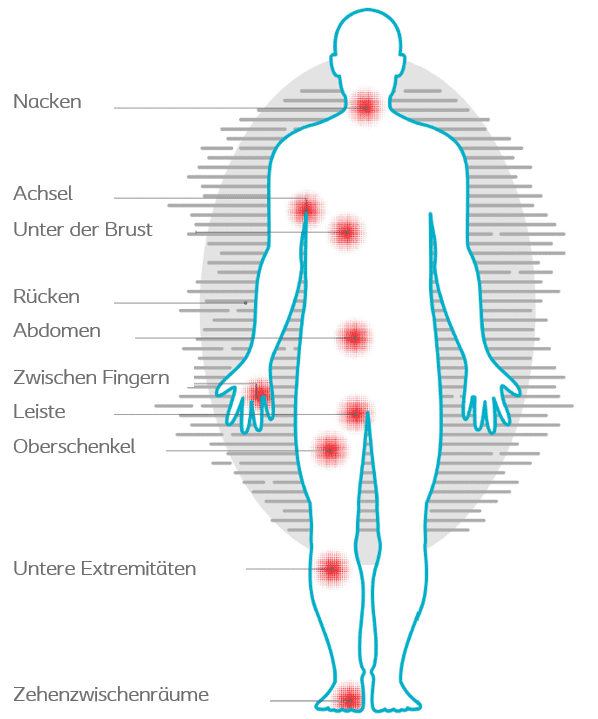
- Keep skin folds clean and dry – gently wash with mild soap and water, then thoroughly dry
- Use a hair dryer on a cool setting to dry hard-to-reach areas
- Apply absorbent powders like cornstarch or talc-free baby powder to reduce moisture
- Wear loose-fitting, breathable clothing
- Change out of wet or sweaty clothes promptly
- Use moisture-wicking fabrics for underwear and athletic wear
- Apply a barrier cream like zinc oxide to protect skin from moisture and friction
- Use soft, absorbent materials to separate skin folds
- Maintain a healthy weight to reduce skin folds
For mild cases, these measures may be sufficient to resolve intertrigo. However, if symptoms persist or worsen, it’s important to consult a healthcare provider for further treatment.
How Can Intertrigo Be Prevented?
Preventing intertrigo involves managing risk factors and maintaining good skin hygiene. Here are some effective prevention strategies:
- Practice good hygiene – shower regularly and dry skin thoroughly
- Use antiperspirants in prone areas to reduce sweating
- Wear loose-fitting, breathable clothing
- Change out of wet or sweaty clothes promptly
- Use moisture-wicking fabrics for underwear and athletic wear
- Apply powder or antiperspirant to skin folds before exercise
- Maintain a healthy weight to reduce skin folds
- Manage underlying conditions like diabetes that increase risk
- Use barrier creams in skin fold areas during hot, humid weather
- For infants, change diapers frequently and keep skin folds dry
Regular skin checks can help identify early signs of intertrigo, allowing for prompt treatment before the condition worsens or secondary infections develop.

When Should You Seek Medical Attention for Intertrigo?
While mild cases of intertrigo can often be managed at home, there are situations where medical attention is necessary. Seek healthcare if:
- Symptoms persist or worsen despite home treatment
- The affected area spreads beyond the initial skin folds
- You develop signs of infection (increased redness, warmth, swelling, pus)
- You have fever or chills
- The skin becomes painful or develops open sores
- You have diabetes or a weakened immune system
- Intertrigo recurs frequently despite preventive measures
A healthcare provider can assess the severity of the intertrigo, identify any secondary infections, and prescribe appropriate treatments. They can also provide guidance on long-term management strategies to prevent recurrence.
How Does Intertrigo Affect Different Populations?
Intertrigo can affect individuals of all ages, but certain populations are at higher risk:
- Obese individuals – excess skin folds increase risk
- Infants – due to skin folds and frequent diaper use
- Elderly – decreased mobility and incontinence can contribute
- Athletes – sweating and tight clothing increase risk
- People with diabetes – higher risk of skin infections
- Individuals with hyperhidrosis – excessive sweating promotes intertrigo
The impact of intertrigo can vary among these groups. For example, in the elderly, intertrigo can lead to more serious complications due to fragile skin and potential mobility issues. In infants, it may cause significant discomfort and irritability. Athletes might experience performance issues if intertrigo develops in areas affected by sports equipment or clothing.

What Are the Potential Complications of Untreated Intertrigo?
If left untreated, intertrigo can lead to several complications:
- Secondary bacterial infections (e.g., cellulitis)
- Fungal infections (e.g., candidiasis)
- Skin breakdown and ulceration
- Chronic skin inflammation
- Spread of infection to other body areas
- In severe cases, systemic infection (rare)
These complications can significantly impact quality of life and may require more intensive treatment. Prompt recognition and management of intertrigo can prevent these adverse outcomes.
How Does Diet and Nutrition Affect Intertrigo?
While diet doesn’t directly cause intertrigo, nutrition can play a role in its development and management:
- Obesity – a diet promoting healthy weight can reduce skin folds
- Diabetes control – proper nutrition helps manage blood sugar, reducing infection risk
- Hydration – adequate water intake supports overall skin health
- Balanced diet – ensures proper nutrition for skin repair and immune function
Some studies suggest that probiotics may help prevent fungal infections associated with intertrigo, though more research is needed. A diet rich in vitamins A, C, and E, as well as zinc, can support skin health and potentially aid in preventing and managing intertrigo.

What Role Do Environmental Factors Play in Intertrigo?
Environmental factors can significantly influence the development and severity of intertrigo:
- Climate – hot, humid weather increases risk
- Occupational factors – jobs requiring protective gear or causing excessive sweating
- Clothing choices – tight, non-breathable fabrics trap moisture
- Living conditions – overcrowded or unsanitary conditions may increase risk
Managing these environmental factors is crucial in preventing and controlling intertrigo. This might involve using air conditioning in hot weather, choosing appropriate work attire, or improving living conditions to reduce risk.
How Does Intertrigo Impact Quality of Life?
Intertrigo can significantly affect a person’s quality of life in several ways:
- Physical discomfort – itching, burning, and pain can be distressing
- Emotional impact – embarrassment about appearance or odor
- Social limitations – may avoid activities due to discomfort or self-consciousness
- Sleep disturbances – itching and discomfort can interfere with sleep
- Work or school performance – discomfort may affect concentration and productivity
Effective management of intertrigo is crucial not just for physical health, but also for overall well-being and quality of life. Support from healthcare providers and understanding from family and friends can help individuals cope with the challenges posed by this condition.

What New Treatments or Research are Emerging for Intertrigo?
While traditional treatments for intertrigo remain effective, research is ongoing to develop new approaches:
- Novel topical formulations – combining antifungal, antibacterial, and anti-inflammatory agents
- Probiotics – both topical and oral, to promote beneficial skin flora
- Advanced moisture-wicking fabrics – for more effective prevention
- Photodynamic therapy – showing promise in treating fungal infections
- Nanoparticle-based treatments – for enhanced drug delivery to affected areas
These emerging treatments aim to provide more effective, targeted approaches to managing intertrigo and preventing recurrence. As research progresses, new options may become available to complement or replace current treatment strategies.
Intertrigo: MedlinePlus Medical Encyclopedia
URL of this page: //medlineplus.gov/ency/article/003223.htm
To use the sharing features on this page, please enable JavaScript.
Intertrigo is inflammation of the skin folds. It tends to occur in warm, moist areas of the body where two skin surfaces rub or press against each other. Such areas are called intertriginous areas.
Intertrigo affects the top layers of skin. It is caused by moisture, bacteria, or fungus in the folds of the skin. Bright red, well-defined weeping patches and plaques are seen in the folds of the neck, armpits, elbow pits, groin, finger and toe webs, or backs of the knees. If the skin is very moist, it may begin to break down. In severe cases, there may be a bad odor.
The condition is most common in people who are obese. It may also occur in people who must stay in bed or who wear medical devices such as artificial limbs, splints, and braces. These devices may trap moisture against the skin.
These devices may trap moisture against the skin.
Intertrigo is common in warm, moist climates.
It may help to lose weight and change your body position often.
Other things you can do are:
- Separate skin folds with dry towels.
- Blow a fan on moist areas.
- Wear loose clothing and moisture-wicking fabrics.
Contact your health care provider if:
The condition does not go away, even with good home care.
The area of affected skin spreads beyond a skin fold.
Your provider can usually tell if you have the condition by looking at your skin.
Other tests may include:
- A skin scraping and a test called a KOH examination to check for a fungal infection
- Looking at your skin with a special lamp called a Wood’s lamp, to check for a bacterial infection called erythrasma
- In rare cases, a skin biopsy is needed to confirm the diagnosis
Treatment options for intertrigo include:
- Antibiotic or antifungal cream applied to the skin
- Drying medicine, such as Domeboro soaks
- Low-dose steroid cream or immune modulating cream may be used
- Creams or powders that protect the skin
Dinulos JGH. Superficial fungal infections. In: Dinulos JGH, ed. Habif’s Clinical Dermatology. 7th ed. Philadelphia, PA: Elsevier; 2021:chap 13.
Superficial fungal infections. In: Dinulos JGH, ed. Habif’s Clinical Dermatology. 7th ed. Philadelphia, PA: Elsevier; 2021:chap 13.
James WD, Elston DM, Treat JR, Rosenbach MA, Neuhaus IM. Bacterial infections. In: James WD, Elston DM, Treat JR, Rosenbach MA, Neuhaus IM, eds. Andrews’ Diseases of the Skin: Clinical Dermatology. 13th ed. Philadelphia, PA: Elsevier; 2020:chap 14.
Paller AS, Mancini AJ. Skin disorders caused by fungi. In: Paller AS, Mancini AJ, eds. Paller and Mancini – Hurwitz Clinical Pediatric Dermatology. 6th ed. St Louis, MO: Elsevier; 2022:chap 17.
Updated by: Ramin Fathi, MD, FAAD, Director, Phoenix Surgical Dermatology Group, Phoenix, AZ. Also reviewed by David C. Dugdale, MD, Medical Director, Brenda Conaway, Editorial Director, and the A.D.A.M. Editorial team.
Intertrigo
Intertrigo
- The Leading Dermatological Society for GPs
- Website author – Dr Tim Cunliffe (read more)
LAST UPDATED: Apr 25, 2023
Introduction
Intertrigo is an inflammatory condition of the skin folds caused by skin-on-skin friction. Secondary infection with bacterial or fungal infection is common. Intertrigo is most commonly found in the groin, axillae, and inframammary folds. It also may affect antecubital fossae; umbilical, perineal, or interdigital areas; neck creases; and folds of the eyelids.
Secondary infection with bacterial or fungal infection is common. Intertrigo is most commonly found in the groin, axillae, and inframammary folds. It also may affect antecubital fossae; umbilical, perineal, or interdigital areas; neck creases; and folds of the eyelids.
This chapter is set out as follows:
- Aetiology
- History
- Clinical findings
- Images
- Investigations
- Management
Aetiology
-
Intertrigo is primarily caused by skin-on-skin friction where it is facilitated by moisture trapped in deep skinfolds where air circulation is limited
-
Individuals at particular risk include: -
Obese patients -
Infants, due to short necks, relative chubbiness, and flexed posture. Drooling also can facilitate intertrigo in infants
Drooling also can facilitate intertrigo in infants -
Toe web intertrigo may be associated with closed-toe or tight-fitting shoes and commonly affects persons participating in athletic, occupational, or recreational activities -
Other predisposing factors include urinary and faecal incontinence, hyperhidrosis, diabetes, poor hygiene, and malnutrition
-
Infection – the moist damaged skin associated with intertrigo is a fertile breeding ground for various pathogens, and secondary cutaneous infections are commonly observed in these areas:
- Bacterial infection – Staphylococcus aureus, group A beta-haemolytic streptococcus, and various gram-negative organisms may occur alone or simultaneously. Proliferation may be associated with keratinocytic necrosis
- Fungal infection – candida is the fungus most commonly associated with intertrigo.
 In the toe webs, gram-negative bacteria are often copathogens
In the toe webs, gram-negative bacteria are often copathogens
History
- Patients may present with itching, burning, and pain in the affected areas
Clinical findings
Distribution
- The condition is most commonly found in the groin, axillae, and inframammary folds. It also may affect antecubital fossae; umbilical, perineal, or interdigital areas; neck creases; and folds of the eyelids
Morphology
- Characterised primarily by erythematous patches, which are often symmetrical
- The erythema may progress to more intense inflammation with erosions, fissures, exudation, crusting and maceration
- Candidal intertrigo may present as typical satellite macules, papules or pustules
- Toe web intertrigo may be mild, and asymptomatic, but it also can present with intense erythema and desquamation, which sometimes is erosive, malodorous, and macerated.
 Patients also may have profuse or purulent discharge and be unable to ambulate. Patients with advanced gram-negative infections may have green discoloration at the infection site. Individuals with severe toe web intertrigo who are overweight or who have diabetes are at a higher risk for cellulitis
Patients also may have profuse or purulent discharge and be unable to ambulate. Patients with advanced gram-negative infections may have green discoloration at the infection site. Individuals with severe toe web intertrigo who are overweight or who have diabetes are at a higher risk for cellulitis
Differential diagnosis
- Seborrhoeic eczema and psoriasis may have presentations similar to intertrigo, but may have other cutaneous manifestations, scalp involvement, and psoriasis is often associated with nail changes. Flexural lesions in psoriasis are usually symmetrical, red, glistening, and well-demarcated
- Tinea eg tinea cruris – lesions are often annular or polycyclic, and tend to have a leading erythematous scaly edge
- Erythrasma, eczema (atopic eczema; irritant contact dermatitis; contact allergic dermatitis), scabies, Hailey-Hailey disease (familial benign chronic pemphigus), and pemphigus vegetans sometimes are mistakenly diagnosed as intertrigo because these conditions also may involve skinfolds
Images
Please refer to notes on image rights at bottom of the page with regards to individual image
ownership.
1
2
3
4
5
6
7
8
9
10
11
12
13
14
15
Investigations
-
If a secondary infection is suspected a swab should be taken for MC&S -
If there is scale, skin scrapings should be sent for mycology to look for tinea
Management
Step 1: prevention and general measures
-
Optimal prevention includes minimising skin-on-skin friction, reducing heat and moisture around skinfolds, and keeping high-risk areas clean and dry. Patients should be warned about heat, humidity, and outside activities. Physical exercise usually is desirable, but patients should shower after exercise and keep intertriginous areas thoroughly dry. Wearing open-toed shoes may help prevent toe web intertrigo
Patients should be warned about heat, humidity, and outside activities. Physical exercise usually is desirable, but patients should shower after exercise and keep intertriginous areas thoroughly dry. Wearing open-toed shoes may help prevent toe web intertrigo
-
Obese patients should lose weight, if possible
-
Patients should wear light, non-constricting, and absorbent clothing and avoid nylon and other synthetic fibres. Bio-textiles (eg cotton or polyester gauze with built-in antiseptic molecules) may help patients with intertrigo
-
Avoid the use of absorptive powders, such as talc and cornstarch, which may irritate the skin
Step 2: medical treatment
-
Daktacort cream BD, for many, is a sensible first-line option as it contains miconazole (which treats candida, as well as having some Gram‐positive bacteriostatic action) and 1% hydrocortisone cream (helps reduce inflammation)
-
For more significant inflammation consider the short-term use of Trimovate ® cream
-
If the skin is not settling then further treatment, such as topical or oral antibiotics, or oral antifungal therapy, may be required, the specific treatment should be guided by results of skin swabs
-
Toe web infection can be very difficult to treat:-
The skin must be allowed to breathe by the wearing of appropriate footwear and leaving the feet bare at home when possible -
Daktacort cream BD for 2-4 weeks can still be used first-line, however, if not responding consider:-
Swabs should be taken for C&S as the proper identification of organisms is critical so that effective therapy can be initiated -
For potential co-existing gram-negative bacteria, soak the feet in 1:80000 potassium permanganate solution (one Permitab ® dissolved in four litres warm water), twice a day for 10-15 minutes. Warn patients to apply Vaseline to nails to avoid staining them brown. Keep the Pemitabs away from children
Warn patients to apply Vaseline to nails to avoid staining them brown. Keep the Pemitabs away from children -
In those responding poorly to treatment consider a ten day trail of ciprofloxacin 500 mg BD -
Occasionally tissue removal may be needed to allow absorption of topical treatments
-
-
Step 3: other treatments
-
Surgery, to remove excess skin, may be required for patients with moderate-severe recalcitrant intertrigo
Disclaimer – the author PCDS cannot accept responsibility for any misleading or incorrect statements, and the management of individual patients remains the direct responsibility of the individual doctor. We do however hope that visitors to this site can contact us regarding comments that are considered misleading or incorrect so that we can continue to improve the site.
Image Rights – The PCDS would like to thank Dermatoweb, DermQuest (Galderma), and others who have contributed images. All named individuals and organisations maintain copyright for the relevant images. This website is non-profit and holds the images for educational purposes only. Any image downloaded must only be used for teaching purposes and not for publication or commercial use. Notice and credit must be given to the PCDS or other named contributors.
All named individuals and organisations maintain copyright for the relevant images. This website is non-profit and holds the images for educational purposes only. Any image downloaded must only be used for teaching purposes and not for publication or commercial use. Notice and credit must be given to the PCDS or other named contributors.
Quick Links
Medical Images
It is important for the PCDS to build its own image bank, as such we welcome original images from our
readers, especially in skin of colour:
- For health professionals: please download and
email the declaration of
consent form and images to pcds@pcds.org.uk
Copyright © 1994 – 2021 The Primary Care Dermatology Society. All rights reserved.
Charity No. 1109376
Lead Author – Dr Tim Cunliffe. Web Design – Mode Ten Designs.
PO Box 789, Rickmansworth, WD3 0NU. UK
UK
Tel: 0333 939 0126 Email: pcds@pcds.org.uk
Website Privacy
Statement Policy
Data
Protection Policy
The Primary Care Dermatology Society
- The PCDS Home
- About the PCDS
- The PCDS Committee
- Contact the PCDS
- YouTube
Candidiasis of the skin. What is skin candidiasis?
IMPORTANT
The information in this section should not be used for self-diagnosis or self-treatment. In case of pain or other exacerbation of the disease, only the attending physician should prescribe diagnostic tests. For diagnosis and proper treatment, you should contact your doctor.
Skin candidiasis is a superficial skin lesion caused by fungi of the genus Candida. Skin candidiasis presents as red and edematous lesions with vesicles, papules, and erosions. Most often, the process is localized in the skin folds of the axillary and inguinal regions, in the interdigital spaces and under the mammary glands. The diagnosis of candidiasis of the skin is confirmed by the detection of Candida fungi on microscopic examination of skin scrapings. Treatment is carried out by local, and if necessary, general, use of antifungal drugs.
- Causes of skin candidiasis
- Classification of skin candidiasis
- Symptoms of skin candidiasis
- Diagnosis of skin candidiasis
- Treatment of skin candidiasis
- Prices for treatment
- candidal intertrigo – candidiasis of large skin folds;
- genital candidiasis;
- candidiasis of the skin of the interdigital spaces of the feet and hands;
- candidal folliculitis – a fungal infection of the hair follicles of the armpit, and in men in the beard and mustache area, occasionally occurs on the scalp;
- dressing candidiasis of the skin – with increased skin moisture under a plaster cast or on the back in bedridden patients;
- diaper candidiasis – in infants in the perineum.
- This article was prepared based on the site: https://www.
 krasotaimedicina.ru/
krasotaimedicina.ru/ - Home
- Articles
- Dermatology
- Candidiasis
General
Recently, there has been an increase in the incidence of fungal infections in general and skin candidiasis in particular. The disease occurs in people of absolutely any age from newborns to the elderly. Since Candida fungi are opportunistic flora and are present in the body of a healthy person, their transition to a pathogenic state with the development of skin candidiasis can signal abnormalities occurring in the body and, first of all, a decrease in immunity.
Since Candida fungi are opportunistic flora and are present in the body of a healthy person, their transition to a pathogenic state with the development of skin candidiasis can signal abnormalities occurring in the body and, first of all, a decrease in immunity.
skin candidiasis
Causes of skin candidiasis
For most people, Candida enters the body in the first year of life. Further fungi are present in the human body as a natural flora. Candidiasis of the skin develops in the case of the transition of fungi from a saprophytic state to a pathogenic one. This may be due to endogenous causes, that is, with changes in the body of the person himself. For example, metabolic disorders (dysproteinemia, obesity, diabetes mellitus), imbalance of the intestinal microflora in dysbacteriosis, decreased immunity, weakening of the body’s defenses against the background of chronic infections, increased sweating, vitamin deficiency can lead to the development of skin candidiasis. Certain types of drug therapy can lead to changes that contribute to the onset of skin candidiasis: treatment with cytostatics or corticosteroids, antibiotic therapy.
Certain types of drug therapy can lead to changes that contribute to the onset of skin candidiasis: treatment with cytostatics or corticosteroids, antibiotic therapy.
It is possible to develop skin candidiasis as a result of exogenous causes, that is, environmental factors that enhance the pathogenic properties of Candida fungi. One of these factors is humidity. The fact is that Candida develops well in a humid environment and at the same time can turn into a pathogenic state. So skin candidiasis is often affected by pool and bath workers, washers and housewives often in contact with water. Elevated ambient temperature, which promotes sweating and maceration of the skin, can also be the cause of skin candidiasis. A favorable environment for the development of pathogenic fungi Candida exists in the confectionery and canning industries, where, in addition to a large number of fungi in the external environment and raw materials, there is a constant maceration of the skin of the hands of workers with sugary substances, citric, malic and other acids.
Classification of skin candidiasis
There are the following types of candidiasis of the skin:
Skin candidiasis symptoms
Skin candidiasis begins with the appearance of areas of redness on it with some swelling and various elements of the rash: papules, pustules, vesicles. After the opening of the elements, weeping erosions are formed, which merge to form clearly demarcated lesions with scalloped edges.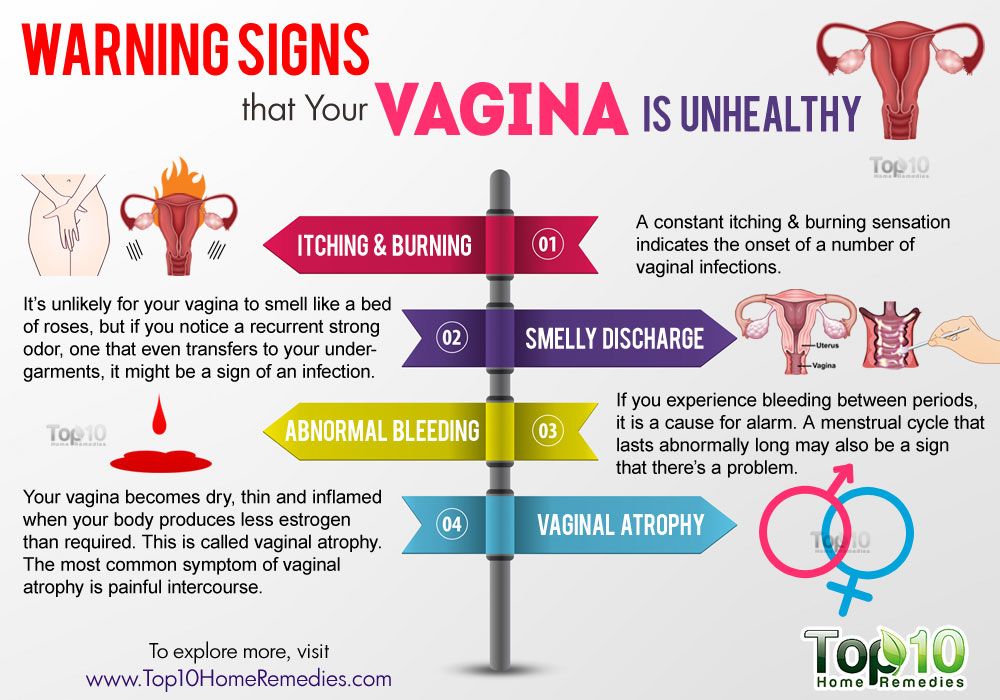 The erosion surface is shiny and smooth, has a characteristic whitish coating. On the periphery of the foci of skin candidiasis, there are separate seropapules, edematous-erythematous spots, vesicles and pustules. Most often, skin candidiasis begins with large skin folds: between the buttocks, in the armpits, under the mammary glands, in the groin.
The erosion surface is shiny and smooth, has a characteristic whitish coating. On the periphery of the foci of skin candidiasis, there are separate seropapules, edematous-erythematous spots, vesicles and pustules. Most often, skin candidiasis begins with large skin folds: between the buttocks, in the armpits, under the mammary glands, in the groin.
Depending on the clinical picture, erythematous and vesicular forms of skin candidiasis are distinguished. In the erythematous form, edematous-erythematous foci with areas of erosion predominate. The vesicular form is characterized by the presence of a large number of vesicles, pustules and papules against the background of inflamed skin.
Candidiasis of the skin can take a chronic relapsing course. In this case, the manifestations described above occur during an exacerbation several times a year and are more common. Chronic candidiasis is more difficult to treat. In severe cases, against the background of concomitant diseases and severe immune disorders, chronic candidiasis can turn into a generalized form with osteoporosis, anemia, recurrent bronchitis and pneumonia, disorders of the gastrointestinal tract and other internal organs.
Interdigital candidiasis of the skin is more often observed in preschoolers and adults working in gardens and orchards. It is manifested by maceration foci with edematous and red skin, along the periphery of which there are vesicles and papules. For employees of vegetable stores and confectionery factories, localization of skin candidiasis between III and IV or IV and V fingers is typical. Candidiasis of the skin of the genital organs is often combined with candidal vaginitis, balanoposthitis and balanitis.
Diagnosis of skin candidiasis
The fastest and easiest way to diagnose fungal etiology of skin lesions is to identify characteristic oval cells with elements of pseudomycelium by direct microscopy of scrapings for pathogenic fungi taken from the affected area of the skin. Preliminary data can be obtained by PCR diagnostics, immunofluorescence reaction (RIF) and enzyme immunoassay (ELISA). The quantitative determination of Candida is of diagnostic value, since the presence of a small number of Candida fungi is normal for the microflora of the human body.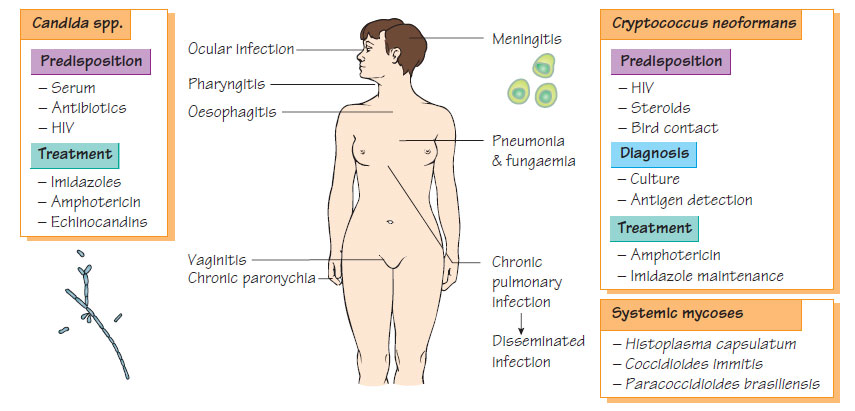 Accurate identification of the causative agent of skin candidiasis and determination of its sensitivity to antifungal drugs is carried out by sowing the scraping material on Sabouraud’s medium.
Accurate identification of the causative agent of skin candidiasis and determination of its sensitivity to antifungal drugs is carried out by sowing the scraping material on Sabouraud’s medium.
Additionally, to identify concomitant diseases and infections in skin candidiasis, the following can be prescribed: a clinical blood test, determination of blood sugar and urine, an immunogram, an HIV test, etc. If necessary, a differential diagnosis of skin candidiasis with eczema, seborrheic dermatitis, psoriasis is carried out. skin folds, favus, recurrent genital herpes, lupus erythematosus, etc.
Treatment of skin candidiasis
The basis of the course treatment of skin candidiasis is the appointment of antifungal drugs. These include: antifungal antibiotics (nystatin, amphotericin B, natamycin, levorin), medicines of the azole group (ketoconazole, isoconazole, clotrimazole, miconazole, econazole, fluconazole) and other drugs (flucytosine, dequalinium chloride, ciclopirox, terbinafine, naftifine, undecylenic drugs). acids). In mild cases of skin candidiasis, with a small number of lesions, treatment is carried out only locally, using antifungal ointments to treat the skin. Apply laser treatment. With widespread lesions, local treatment is combined with oral antifungal drugs. Doses and duration of treatment depend on the severity of the process and the effectiveness of the therapy. Inadequately small doses of drugs or too short a course of treatment can lead to relapses of skin candidiasis.
acids). In mild cases of skin candidiasis, with a small number of lesions, treatment is carried out only locally, using antifungal ointments to treat the skin. Apply laser treatment. With widespread lesions, local treatment is combined with oral antifungal drugs. Doses and duration of treatment depend on the severity of the process and the effectiveness of the therapy. Inadequately small doses of drugs or too short a course of treatment can lead to relapses of skin candidiasis.
Along with antifungal therapy, concomitant diseases are treated and the body’s defenses are strengthened. Patients with skin candidiasis should follow a low carbohydrate diet. During treatment and in the future, to prevent relapses, it is necessary to ensure that the skin in the area of \u200b\u200bthe folds always remains clean and dry.
You can share your medical history, what helped you in the treatment of skin candidiasis.
Sources
IMPORTANT
Information from this section cannot be used for self-diagnosis and self-treatment. In case of pain or other exacerbation of the disease, only the attending physician should prescribe diagnostic tests. For diagnosis and proper treatment, you should contact your doctor.
Candidiasis | Medical Center Avanta-Med
Updated: 05/31/2023
Candidiasis is a disease caused by an opportunistic (a microorganism that causes disease under certain conditions) fungus of the genus Candida, characterized more often by lesions of the mucous membranes and large skin folds, which often occur chronically.
Fungi of the genus Candida are representatives of the normal microflora of the oropharynx and gastrointestinal tract. Often isolated from the skin, especially from large folds. The occurrence of the disease is promoted by sweating, maceration (softening) of the skin with frequent and prolonged contact with water and detergents.
Very often, the development of diseases is promoted by impaired carbohydrate metabolism, diabetes mellitus and hereditary predisposition to diabetes mellitus, obesity (increased sweating in the area of large folds, followed by skin maceration), thyroid diseases and other diseases that occur with reduced immunity and violation of the integral protective properties of the skin.
The occurrence of candidiasis of the female genital organs is facilitated by frequent douching, the use of feminine hygiene products, medical contraceptives for vaginal use, the use of shower gels and wearing too tight, especially synthetic underwear, as well as in the presence of endocrine diseases mentioned above. Often occurs in pregnant women, during treatment with antibiotics and hormonal drugs.
Often occurs in pregnant women, during treatment with antibiotics and hormonal drugs.
According to the international classification, they distinguish:
– candidiasis stomatitis
– pulmonary candidiasis
– skin and nail candidiasis
– candidiasis of the external female genital organs
– candidiasis of other urogenital localizations
– candidal meningitis
– candidal endocarditis
– candidal septicemia, etc.
Dermatologists deal with candidal lesions of the mucous membranes (genital candidiasis), skin and nails.
Candidal stomatitis.
This is a lesion of the membranes of the oral cavity, often asymptomatic, but sometimes accompanied by burning, dulling of taste sensations, and pain when swallowing. White cheesy coating on tongue. Often accompanied by damage to the corners of the mouth – candidal jam.
Skin candidiasis.
Mainly large folds are affected (between the buttocks, crotch folds, folds under the mammary glands, in obese people in the folds of the abdomen). At the same time, the skin in these areas turns red, the boundaries of the focus are often clear, the reddened skin is shiny (varnished), on the folds of erosion, along the edges of which there are finely scalloped scraps of the epidermis (upper layer of the skin). Often accompanied by itching and burning.
At the same time, the skin in these areas turns red, the boundaries of the focus are often clear, the reddened skin is shiny (varnished), on the folds of erosion, along the edges of which there are finely scalloped scraps of the epidermis (upper layer of the skin). Often accompanied by itching and burning.
Nail candidiasis.
Often accompanied by inflammation of the nail fold, which is accompanied by swelling and soreness. Often, creamy pus is released from under the roller. With the defeat of the nail plates themselves, they change color to yellow, grayish-green, color changes can reach almost black.
Genital candidiasis.
Candidal lesions of the female genital organs. In women, it occurs with lesions of the mucous membranes of the labia and vagina, the mucous membranes acquire a reddish “lacquered” color, covered with a white coating, curdled discharge is observed from the vagina. All this is accompanied by itching, discomfort, burning, pain during urination, pain during intercourse.
Balanitis and bolaporitis.
In men, it occurs in the form of inflammation of the glans penis and foreskin, accompanied by redness and swelling of the skin of the glans penis and foreskin. Against the background of redness, very often small punctate rashes, sometimes erosion, abundant white plaque. At the same time, patients feel itching, burning, as well as discomfort and soreness during intercourse.
In children
.
Candidiasis proceeds in much the same way as in adults. The disposing factors in children are the same, but a significant role belongs to hypovitaminosis caused by malnutrition (vitamin B2 and B6 deficiency, intestinal dysbacteriosis in gastrointestinal diseases), as well as a physiological decrease in some saliva enzymes and immunity deficiency. The development of thrush in children is also facilitated by regurgitation with the reflux of the acidic contents of the stomach into the oral cavity and the resulting growth of the fungus in the mouth. In especially weakened children, it can be accompanied by damage to both smooth skin and scalp (chronic generalized granulomatous candidiasis). It begins with damage to the oral mucosa. Healing often contributes to the weakening of the child’s body during birth injuries, irrational treatment with antibiotics and hormonal drugs (especially in cases of self-medication).
In especially weakened children, it can be accompanied by damage to both smooth skin and scalp (chronic generalized granulomatous candidiasis). It begins with damage to the oral mucosa. Healing often contributes to the weakening of the child’s body during birth injuries, irrational treatment with antibiotics and hormonal drugs (especially in cases of self-medication).
Diagnostics.
The diagnosis is made on the basis of the detection of elements of the fungus during microscopy or, in complex cases, during bacteriological examination, while the clinical manifestation of the disease must also be taken into account.
Being engaged in the treatment of candidiasis, the doctor must identify the presence of latent diseases that are conducive to the development of candidiasis and contribute to the chronicity of the process with the subsequent recurrence of this disease.
Treatment.
In the treatment of this disease, both external antifungal agents and systemic antifungal drugs are used with the mandatory treatment of diseases that contribute to the development of candidiasis.

 Drooling also can facilitate intertrigo in infants
Drooling also can facilitate intertrigo in infants In the toe webs, gram-negative bacteria are often copathogens
In the toe webs, gram-negative bacteria are often copathogens Patients also may have profuse or purulent discharge and be unable to ambulate. Patients with advanced gram-negative infections may have green discoloration at the infection site. Individuals with severe toe web intertrigo who are overweight or who have diabetes are at a higher risk for cellulitis
Patients also may have profuse or purulent discharge and be unable to ambulate. Patients with advanced gram-negative infections may have green discoloration at the infection site. Individuals with severe toe web intertrigo who are overweight or who have diabetes are at a higher risk for cellulitis  Patients should be warned about heat, humidity, and outside activities. Physical exercise usually is desirable, but patients should shower after exercise and keep intertriginous areas thoroughly dry. Wearing open-toed shoes may help prevent toe web intertrigo
Patients should be warned about heat, humidity, and outside activities. Physical exercise usually is desirable, but patients should shower after exercise and keep intertriginous areas thoroughly dry. Wearing open-toed shoes may help prevent toe web intertrigo Warn patients to apply Vaseline to nails to avoid staining them brown. Keep the Pemitabs away from children
Warn patients to apply Vaseline to nails to avoid staining them brown. Keep the Pemitabs away from children krasotaimedicina.ru/
krasotaimedicina.ru/